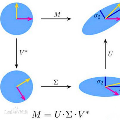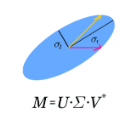Reconfigurable intelligent surfaces (RIS) have drawn considerable attention recently due to their controllable scattering elements that are able to direct electromagnetic waves into desirable directions. Although RISs share some similarities with relays, the two have fundamental differences impacting their performance. To harness the benefits of both relaying and RISs, a multi-user communication system is proposed in this paper wherein a relay and an RIS cooperate to improve performance in terms of energy efficiency. To utilize the RIS efficiently, the discrete phase shifts of the RIS elements are optimized along with the beamforming matrices at the transmitter and the relay, targeting the minimization of the total transmit power subject to a quality-of-service (QoS) constraint. Then, two suboptimal efficient solutions are proposed for the resulting discrete and non-convex problem, one based on singular value decomposition (SVD) and uplink-downlink duality and the other is based on SVD combined with zero-forcing. Simulations show that the proposed solutions outperform a system with either a relay or an RIS only, especially when both are closer to the users than to the base-station.
翻译:最近,由于可控的分散元素能够将电磁波引向理想方向,可重新配置的智能表面(RIS)引起了相当的注意。虽然RIS与中继有着一些相似之处,但两者有着影响其性能的根本差异。为了利用继电器和RIS的好处,本文件提议了一个多用户通信系统,由中继器和RIS合作提高能效方面的性能。为了高效地利用RIS,对RIS各元素的离散阶段转移进行了优化,同时在发射机和中继的波形组合矩阵中,针对受服务质量制约的传输总功率的最小化进行了目标设定。然后,为由此产生的离散和非凝聚器问题提出了两种不优化的高效解决方案,一种基于单值分解和上链-下链接双元性,另一种基于SVD和零前置。模拟显示,拟议的解决方案比系统更接近中继器或离基点的系统,特别是离基点的用户。




